The Road Ahead: Revolutionizing Automotive Design with 3D Printing and Advanced 3D Car Models
The Road Ahead: Revolutionizing Automotive Design with 3D Printing and Advanced 3D Car Models
The automotive industry, a realm of precision engineering and groundbreaking innovation, is undergoing a profound transformation, and at its heart lies the power of 3D printing combined with sophisticated 3D car models. From the initial spark of a concept design to the fabrication of custom, high-performance parts, additive manufacturing is redefining what’s possible. This seismic shift isn’t just about creating prototypes faster; it’s about unlocking new design freedoms, optimizing vehicle performance through lightweighting, and personalizing the driving experience like never before. For 3D artists, automotive designers, game developers, and visualization professionals, understanding the symbiosis between high-quality 3D models and the intricacies of 3D printing is no longer optional—it’s essential. This comprehensive guide will navigate the technical landscape of preparing, optimizing, and leveraging 3D car models for the tangible world of 3D printing, exploring everything from foundational topology to advanced material science and real-world applications. Join us as we explore how digital precision translates into physical automotive excellence.
The Foundation: Automotive 3D Modeling for Print Excellence
Before a single layer of material is deposited, the journey of a 3D printed car part begins in the digital realm. The quality and structure of your 3D car model are paramount, directly influencing the printability, aesthetic finish, and structural integrity of the final physical component. Unlike models optimized purely for rendering or real-time game engines, a model intended for 3D printing demands specific considerations regarding its geometry and overall digital construction. The core principle here is robustness and integrity, ensuring that the digital object is a perfectly closed, watertight volume that a slicer software can interpret without ambiguity.
Topology and Mesh Integrity for Physical Production
For 3D printing, the concept of “good topology” extends beyond clean deformations for animation or efficient polygon counts for rendering. It primarily concerns creating a **manifold mesh**. A manifold mesh is one where every edge is shared by exactly two faces, ensuring that the object has no holes, internal geometry, or intersecting faces. Non-manifold geometry—such as disconnected vertices, unmerged edges, or faces with zero thickness—will inevitably lead to printing errors, causing slicers to fail or produce incomplete prints. When working with complex automotive surfaces, achieving a perfectly manifold mesh requires meticulous attention. Tools like Blender’s 3D Print Toolbox, 3ds Max’s STL Check modifier, or Maya’s Mesh Cleanup utility can help identify and fix these issues. Furthermore, while for rendering, a smooth surface often means subdividing, for printing, excessive polygon counts can lead to overly large file sizes and processing slowdowns, especially if the details are smaller than the printer’s resolution. It’s a balance: sufficient detail for accuracy, but not so much that it creates unnecessary data overhead or minute features that cannot be reproduced physically.
Design for Manufacturability (DfM) Principles
Integrating Design for Manufacturability (DfM) principles into your 3D modeling workflow ensures that your automotive component is not just visually appealing but also practically printable and functional. This involves considering the limitations and capabilities of 3D printing technology from the outset. Key DfM considerations for car parts include **wall thickness**, **minimum feature size**, and **tolerance**. For instance, most FDM printers require a minimum wall thickness of around 0.8mm to 1.2mm for structural integrity, while SLA printers can achieve finer details down to 0.1-0.2mm. Very thin walls or extremely fine details in your digital model might break off during printing or post-processing, or simply not render accurately. Similarly, **overhangs** are a critical concern. Parts of your model that extend horizontally without support from below will require support structures during printing, which can add to material cost, print time, and post-processing effort. Intelligent model orientation and design choices can minimize the need for supports. Automotive designers increasingly leverage simulation tools to test the structural integrity of a part’s design *before* it’s even printed, reducing iteration cycles and material waste. When sourcing high-quality 3D car models from platforms like 88cars3d.com, it’s advisable to verify if the models are already optimized with DfM principles in mind, or if they require additional preparation for specific printing needs.
From Digital to Tangible: Preparing 3D Car Models for Print
Once your automotive 3D model is meticulously crafted with print-ready topology and DfM principles, the next crucial phase involves its conversion and preparation for the 3D printer itself. This stage acts as a bridge, translating the abstract digital representation into a precise set of instructions that the printer can execute. It involves ensuring absolute mesh integrity, proper scaling, and strategic considerations for how the physical part will be built layer by layer.
Mesh Repair and Watertightness
The single most critical step for any 3D print is ensuring your model is **watertight**. This means the 3D model forms a completely closed volume with no gaps, holes, or inverted normals that could confuse the slicer software. Imagine filling your digital model with water; if any leaks are detected, it’s not watertight. Common issues include unstitched edges, duplicate faces, intersecting geometry (where one part of the mesh penetrates another), and flipped normal directions. Tools like **Netfabb**, **Meshmixer**, and even integrated functions within software like Blender’s 3D Print Toolbox or ZBrush’s Dynamesh/ZRemesher features are indispensable for automated and manual mesh repair. These tools can identify and automatically close small gaps, reorient normals, and simplify complex geometry while maintaining critical detail. After repair, the standard file format for 3D printing is often **STL (Stereolithography)**, which describes only the surface geometry of a 3D object as a collection of triangles. More advanced formats like **3MF (3D Manufacturing Format)** or **AMF (Additive Manufacturing File Format)** can store additional data such as color, materials, and internal structures, offering a richer dataset for complex parts. While general-purpose formats like **OBJ** and **FBX** are excellent for rendering and game development, they often require conversion and cleaning for robust 3D printing.
Scale, Orientation, and Support Structures
Before sending your model to the slicer, correct **scaling** is vital. Ensure your model is scaled appropriately for the real-world dimensions you intend to print. Many 3D modeling software use unitless systems, so correctly defining units (millimeters, centimeters, or inches) before export is crucial to avoid printing a car door panel the size of a postage stamp. **Orientation** on the print bed significantly impacts print quality, required support material, and print time. Generally, minimizing overhangs and presenting the largest flat surface to the print bed reduces the need for supports. However, structural integrity or surface finish requirements might dictate a different orientation. For example, if a car part needs maximum strength in a certain direction, aligning the layer lines (anisotropic properties) with the stress direction can be beneficial. **Support structures** are temporary scaffolding printed to prevent sagging or collapse of overhangs and bridges. Slicer software (e.g., Cura, PrusaSlicer, Simplify3D) automatically generates these based on customizable parameters (overhang angle threshold, density, pattern). While necessary, supports add to material consumption and post-processing, as they need to be removed, which can leave marks on the surface that require sanding or finishing. Thoughtful design, such as incorporating chamfers or fillets instead of sharp overhangs, can dramatically reduce or eliminate the need for supports.
Exploring 3D Printing Technologies for Automotive
The world of 3D printing is diverse, offering a spectrum of technologies, each with its unique advantages and limitations, especially when it comes to automotive applications. Choosing the right technology hinges on the desired material properties, surface finish, part complexity, and budget. Understanding these distinctions is crucial for automotive designers looking to transform their 3D car models into functional parts, from rapid prototypes to custom interior components.
FDM, SLA, SLS – Pros and Cons for Car Parts
* **FDM (Fused Deposition Modeling):** This is the most common and accessible 3D printing technology. It works by extruding a thermoplastic filament (like ABS, PLA, PETG, Nylon) through a heated nozzle, building the part layer by layer.
* **Pros for Automotive:** Cost-effective for larger, simpler parts like mock-up panels, jigs, and fixtures. Wide range of engineering-grade thermoplastics available, some with good heat and chemical resistance (e.g., ABS for dashboard prototypes, Nylon for functional brackets). Relatively easy to operate and maintain.
* **Cons for Automotive:** Layer lines are often visible, leading to a coarser surface finish unless extensively post-processed. Anisotropic properties (weaker along Z-axis). Limited fine detail compared to resin or powder-based methods.
* **SLA (Stereolithography):** Utilizes a UV laser to cure liquid photopolymer resin layer by layer.
* **Pros for Automotive:** Produces highly detailed, smooth surface finishes, making it ideal for visual prototypes, intricate bezels, or aerodynamic studies where aesthetics are paramount. A variety of resins are available, including those mimicking ABS or polypropylene, clear resins for light guides, and even flexible resins.
* **Cons for Automotive:** Resins can be more brittle than thermoplastics. Parts require post-curing and careful handling of uncured resin. Build volume can be smaller than FDM, and material costs are generally higher.
* **SLS (Selective Laser Sintering):** Employs a laser to fuse powdered material (typically Nylon PA12 or TPU) layer by layer.
* **Pros for Automotive:** Excellent mechanical properties, high strength-to-weight ratio, and good heat resistance. Parts are isotropic (uniform strength in all directions), making them suitable for functional end-use parts like custom intake manifolds, complex connectors, or lightweight structural components. No support structures are needed as the unfused powder acts as support, allowing for highly complex, organic geometries.
* **Cons for Automotive:** High equipment cost and operational complexity. Surface finish is typically matte and porous, requiring post-processing for aesthetic applications. Limited material choice compared to FDM.
Material Selection and Functional Requirements
The choice of 3D printing material is as critical as the choice of technology, especially when manufacturing custom car parts. It must align directly with the functional requirements of the component.
* **Strength and Durability:** For structural components or parts exposed to mechanical stress, materials like Carbon Fiber reinforced Nylon (FDM), Nylon PA12 (SLS), or high-impact resins (SLA) are excellent choices. These materials offer superior tensile strength and impact resistance compared to standard PLA.
* **Heat Resistance:** Under the hood, temperatures can soar. Materials like Ultem (PEI) or PEEK (FDM) offer exceptional thermal stability, crucial for components near the engine or exhaust. ABS and certain high-temperature resins also provide good heat deflection.
* **Chemical Resistance:** Automotive fluids (oil, fuel, coolants) can be corrosive. Selecting materials like certain Nylons or specialty resins with specific chemical resistance properties is vital for seals, gaskets, or fluid conduits.
* **Flexibility:** For components like grommets, flexible conduits, or custom seals, TPU (FDM) or flexible resins (SLA) provide the necessary elasticity and rebound properties.
* **Aesthetics and Surface Finish:** For interior trim pieces, dashboard components, or exterior styling elements, SLA excels in smooth finishes, while FDM with advanced post-processing (sanding, painting) can achieve good results. For metallic finishes, metal 3D printing (DMLS/SLM) is used for very high-performance applications but at significantly higher cost and complexity.
Understanding these material properties and matching them to your automotive 3D model’s intended function is paramount for successful and reliable 3D printed car parts.
Custom Car Parts & Rapid Prototyping in Automotive
The automotive industry has traditionally relied on expensive tooling and lengthy production cycles for new parts. 3D printing, or additive manufacturing, has shattered these paradigms, ushering in an era of unprecedented agility for both custom car parts and rapid prototyping. This shift enables faster design iterations, cost-effective small-batch production, and a level of personalization previously unimaginable for enthusiasts and manufacturers alike.
From Concept to Functional Prototype
Rapid prototyping is arguably where 3D printing made its initial, significant impact on automotive design. Before 3D printing, creating a physical model of a new car component often meant weeks or months of skilled manual labor or costly CNC machining. With 3D printing, a designer can move from a CAD model (like those available at 88cars3d.com) to a physical prototype in a matter of hours or days. This drastically compresses the design cycle:
1. **Initial Concept Visualization:** A rough 3D model is quickly printed to assess ergonomics, aesthetics, and fitment. An early dashboard concept can be printed in sections using FDM to get a feel for its spatial presence.
2. **Form and Fit Testing:** More refined SLA or FDM prints allow engineers to test how a part interacts with surrounding components. Does a new bracket fit perfectly into its designated space? Does a custom air duct integrate seamlessly with the engine bay?
3. **Functional Testing:** Using advanced materials like reinforced Nylons or high-temperature resins via SLS or advanced FDM, functional prototypes can undergo rigorous tests, including vibration, thermal cycling, and even limited dynamic stress, to validate design decisions before committing to expensive production tooling. For instance, a complex intake manifold can be prototyped and tested on a dynamometer to verify airflow efficiency. This iterative process of “design, print, test, refine” accelerates innovation and significantly reduces development costs and time-to-market for new vehicle features or entire car models.
Low-Volume Production and Personalization
Beyond prototyping, 3D printing is increasingly being adopted for low-volume production and the creation of highly personalized custom car parts.
* **Niche Market Parts:** For classic car restoration, bespoke limited-edition vehicles, or specialized motorsport components, where traditional manufacturing costs are prohibitive for small quantities, 3D printing offers a viable solution. A complex, discontinued headlight bracket for a vintage model can be reverse-engineered and 3D printed instead of being painstakingly fabricated by hand.
* **Vehicle Personalization:** The desire for unique vehicles is driving demand for custom accessories. Owners can now design and 3D print bespoke interior trims, gear shifter knobs, vent covers, or even aerodynamic enhancements tailored to their exact preferences and vehicle specifications. Using services that offer 3D printing, individuals can take a 3D car model sourced from a marketplace and adapt it for printing.
* **Jigs, Fixtures, and Tooling:** Automotive assembly lines greatly benefit from 3D printed jigs, fixtures, and custom tools. These often complex, ergonomic aids improve efficiency, worker safety, and precision without the lead time or cost of traditional manufacturing methods. They can be designed and printed overnight to address an immediate production challenge. This capability to produce specific, functional parts on demand is transforming supply chains and manufacturing flexibility within the automotive sector.
Advanced Applications & The Future of 3D Printed Automotive
As 3D printing technology continues its rapid evolution, its applications in the automotive sector are expanding far beyond simple prototyping and custom parts. We are now entering an era where additive manufacturing is enabling fundamental shifts in vehicle design, performance, and sustainability, pushing the boundaries of what a car can be. The sophisticated 3D car models available today are the digital blueprints for this exciting future.
Beyond Prototypes: End-Use Parts and Lightweighting
One of the most significant advancements is the transition of 3D printed components from mere prototypes to **end-use parts** directly integrated into production vehicles.
* **Functional Components:** Companies are now 3D printing complex, functional parts like fluid lines, air ducts, brackets, and even interior trim components for series production. For example, BMW has been integrating 3D printed parts like convertible roof brackets and headlight components into their vehicles for years. Porsche offers 3D printed bucket seats that are customizable in firmness. These parts benefit from the design freedom of 3D printing, allowing for geometries that reduce weight and integrate multiple functions into a single component, something impossible with traditional manufacturing.
* **Lightweighting:** This is a critical area for automotive innovation, driven by the need for improved fuel efficiency and reduced emissions (or extended range for EVs). 3D printing excels at creating **generative designs** and **lattice structures** that significantly reduce material usage while maintaining or even increasing structural integrity. Algorithms can optimize a part’s geometry based on load paths, resulting in organic, bionic-looking structures that are incredibly light yet strong. This allows for parts like lightweight brake calipers, optimized suspension components, or engine brackets that contribute to overall vehicle performance and efficiency. For example, Bugatti has famously 3D printed titanium brake calipers that are lighter and stronger than conventionally manufactured versions.
The Role of 3D Scanners and Reverse Engineering
The ability to create highly accurate 3D car models from existing physical objects is a powerful enabler for 3D printing in automotive. **3D scanning** plays a pivotal role in this process:
* **Reverse Engineering:** For classic car restoration or aftermarket parts development, 3D scanners can capture the precise geometry of existing physical components, even if no original CAD data exists. A high-resolution scan generates a dense point cloud or mesh, which can then be cleaned, optimized, and converted into a watertight 3D model suitable for 3D printing. This is invaluable for replicating obsolete parts, or for creating custom upgrades that integrate perfectly with original vehicle architecture.
* **Quality Control and Inspection:** 3D scanning is also used in conjunction with 3D printing for quality assurance. Printed parts can be scanned and compared against the original CAD model to detect deviations, warpage, or manufacturing defects, ensuring that the physical output matches the digital design with high precision.
* **Customization from Existing Parts:** Imagine scanning an existing dashboard, then modifying its 3D model to integrate new features like a custom infotainment screen mount or unique storage compartments, and then 3D printing the customized section. This workflow, enabled by the synergy of 3D scanning and 3D modeling, empowers highly personalized and integrated solutions. The digital assets, often starting as high-quality 3D car models, become the foundation for creating physical parts through a sophisticated workflow that leverages the strengths of both digital capture and additive manufacturing.
Conclusion: Driving Innovation with Digital Precision and Physical Freedom
The convergence of advanced 3D modeling and 3D printing is fundamentally reshaping the automotive landscape. What began as a tool for rapid prototyping has matured into a cornerstone of design innovation, enabling the creation of custom car parts, accelerating development cycles, and pushing the boundaries of vehicle performance through lightweighting and complex functional integration. For 3D artists, engineers, and enthusiasts, the ability to translate meticulously crafted digital 3D car models into tangible, high-performance components is a game-changer.
We’ve explored the critical importance of robust topology and DfM principles in your digital assets, the essential steps of mesh repair and print preparation, and the strategic choices involved in selecting the right 3D printing technology and material for diverse automotive applications. From FDM’s accessibility for mock-ups to SLS’s strength for end-use parts, each method offers unique advantages. Ultimately, the future of automotive design lies in a seamless workflow where sophisticated 3D models serve as the blueprint for an additive manufacturing process that delivers unprecedented freedom, efficiency, and personalization. As you embark on your next automotive project, remember that the quality of your digital foundation dictates the integrity of your physical creation. Explore the vast potential of high-quality 3D car models available on platforms like 88cars3d.com, and start transforming your digital visions into reality, driving innovation one layer at a time.
Featured 3D Car Models
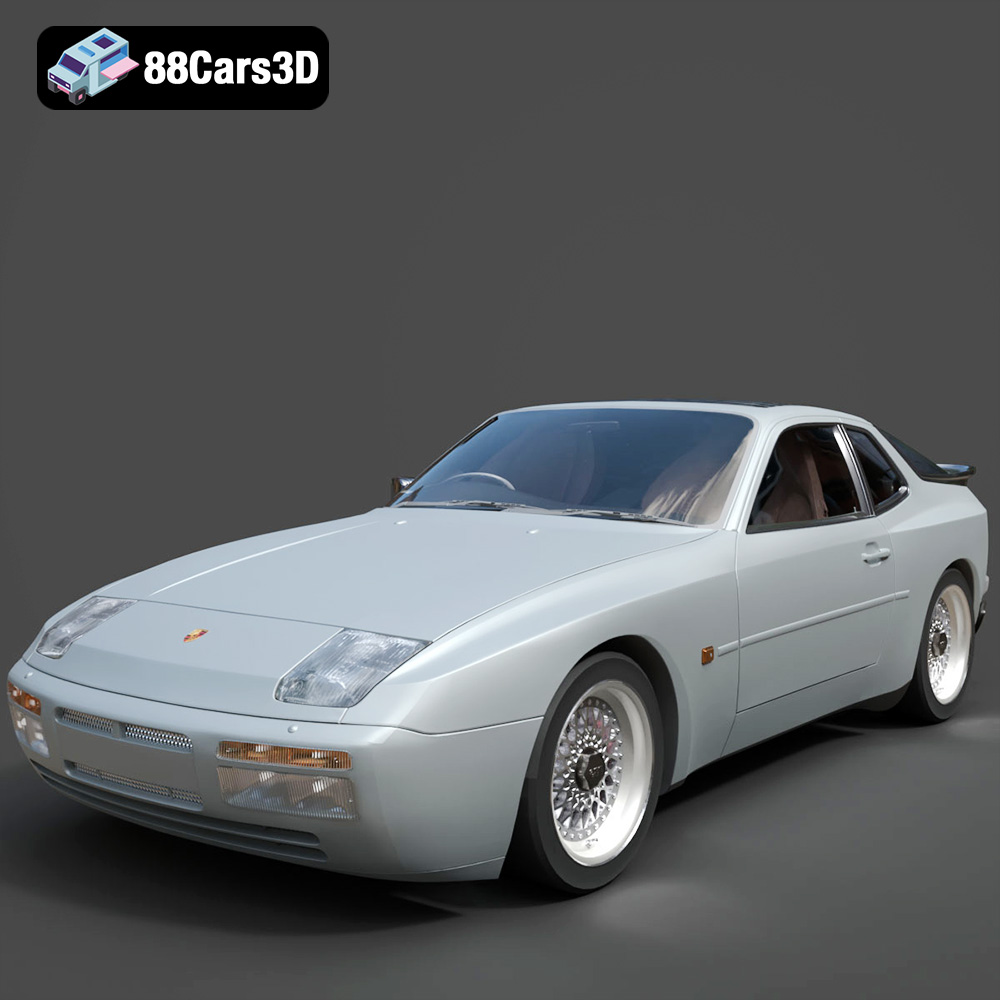
Porsche 944 3D Model
Texture: Yes
Material: Yes
Download the Porsche 944 3D Model featuring clean geometry, realistic detailing, and a fully modeled interior. Includes .blend, .fbx, .obj, .glb, .stl, .ply, .unreal, and .max formats for rendering, simulation, and game development.
Price: $10
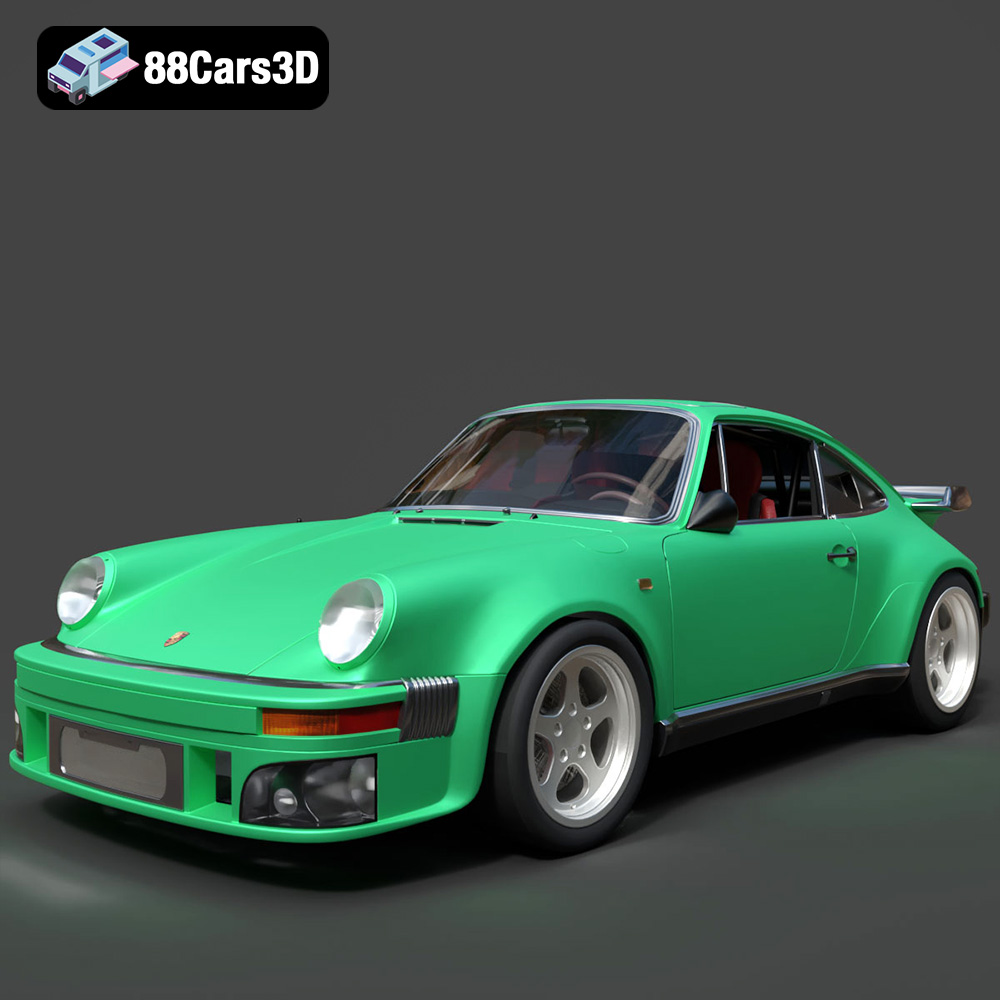
Porsche 964 3D Model
Texture: Yes
Material: Yes
Download the Porsche 964 3D Model featuring clean geometry, realistic detailing, and a fully modeled interior. Includes .blend, .fbx, .obj, .glb, .stl, .ply, .unreal, and .max formats for rendering, simulation, and game development.
Price: $10

Porsche 911 Carrera S 2012 3D Model
Texture: Yes
Material: Yes
Download the Porsche 911 Carrera S 2012 3D Model featuring clean geometry, realistic detailing, and a fully modeled interior. Includes .blend, .fbx, .obj, .glb, .stl, .ply, .unreal, and .max formats for rendering, simulation, and game development.
Price: $10

Porsche 911 Carrera S Cabriolet 2012 3D Model
Texture: Yes
Material: Yes
Download the Porsche 911 Carrera S Cabriolet (991) 3D Model featuring clean geometry, realistic detailing, and a fully modeled interior. Includes .blend, .fbx, .obj, .glb, .stl, .ply, .unreal, and .max formats for rendering, simulation, and game development.
Price: $10
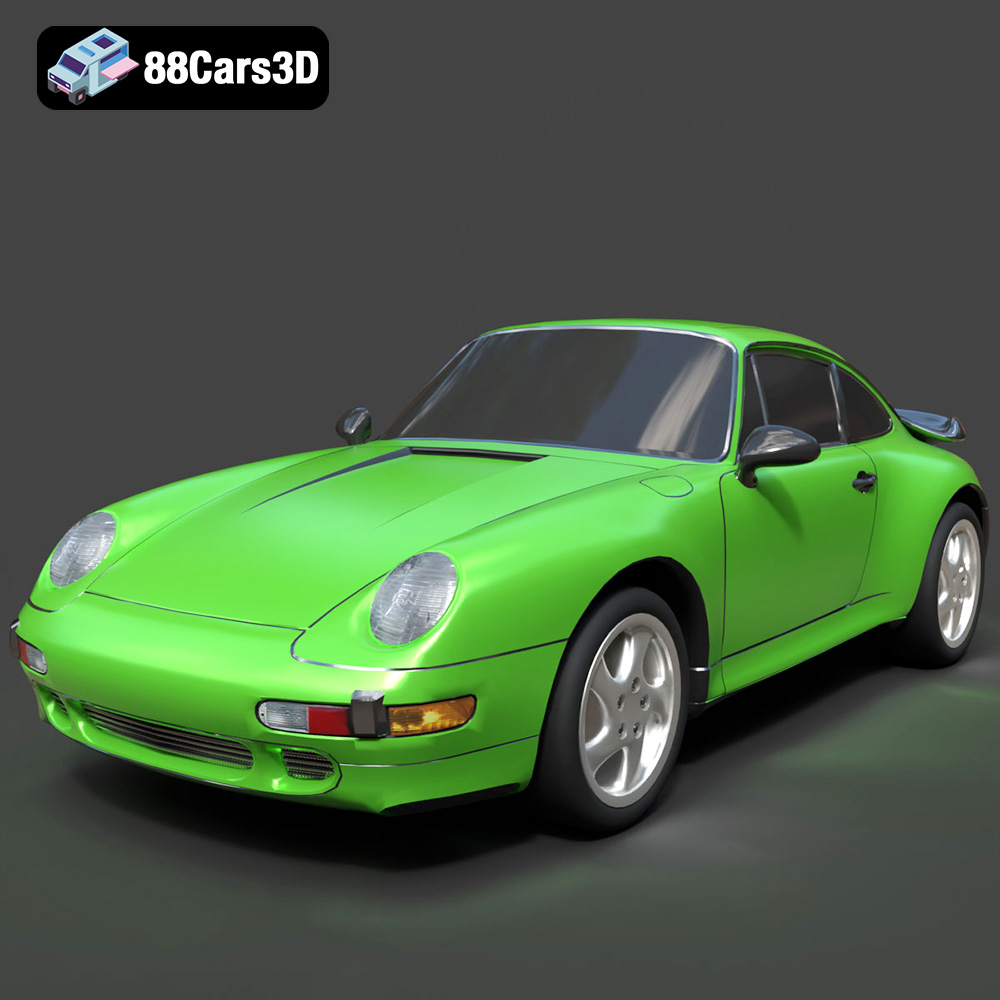
Porsche 911 Turbo (993) 3D Model
Texture: Yes
Material: Yes
Download the Porsche 911 Turbo (993) 3D Model featuring clean geometry, realistic detailing, and a fully modeled interior. Includes .blend, .fbx, .obj, .glb, .stl, .ply, .unreal, and .max formats for rendering, simulation, and game development.
Price: $10
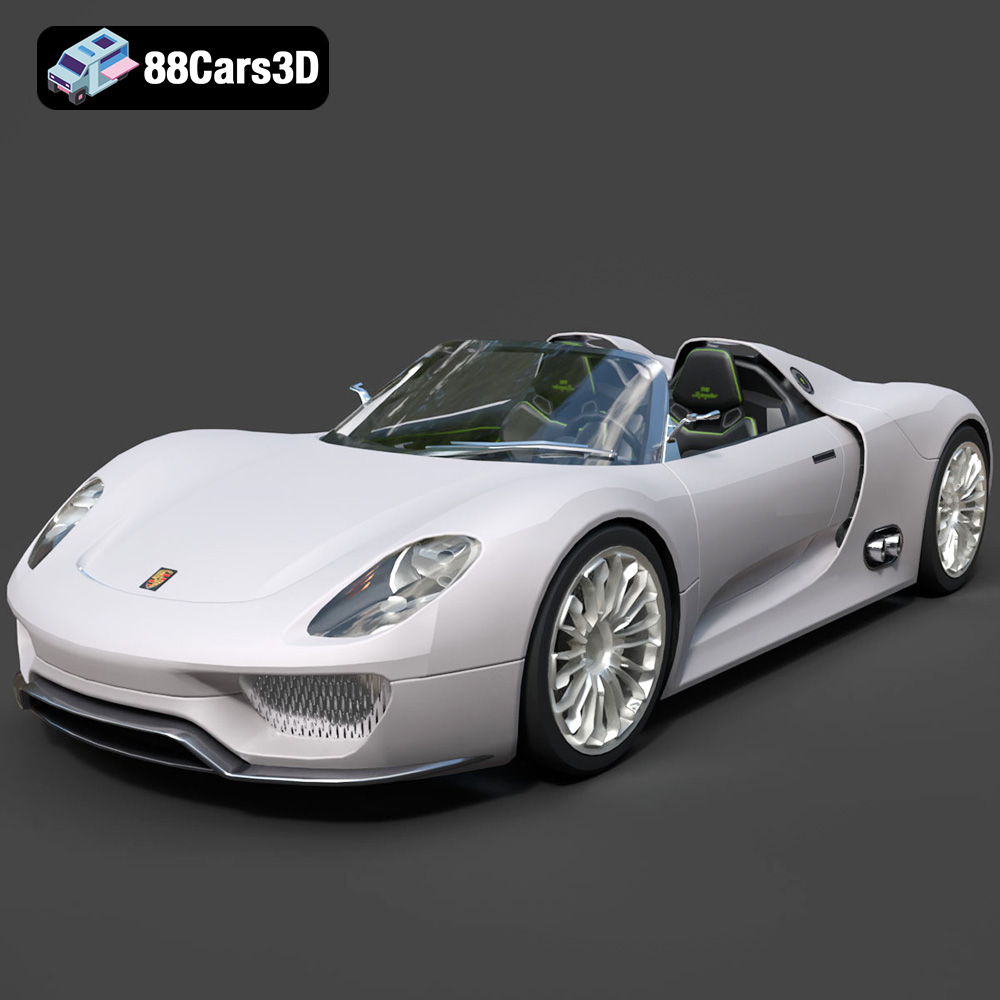
Porsche 918 Spyder 3D Model
Texture: Yes
Material: Yes
Download the Porsche 918 Spyder 3D Model featuring clean geometry, realistic detailing, and a fully modeled interior. Includes .blend, .fbx, .obj, .glb, .stl, .ply, .unreal, and .max formats for rendering, simulation, and game development.
Price: $10
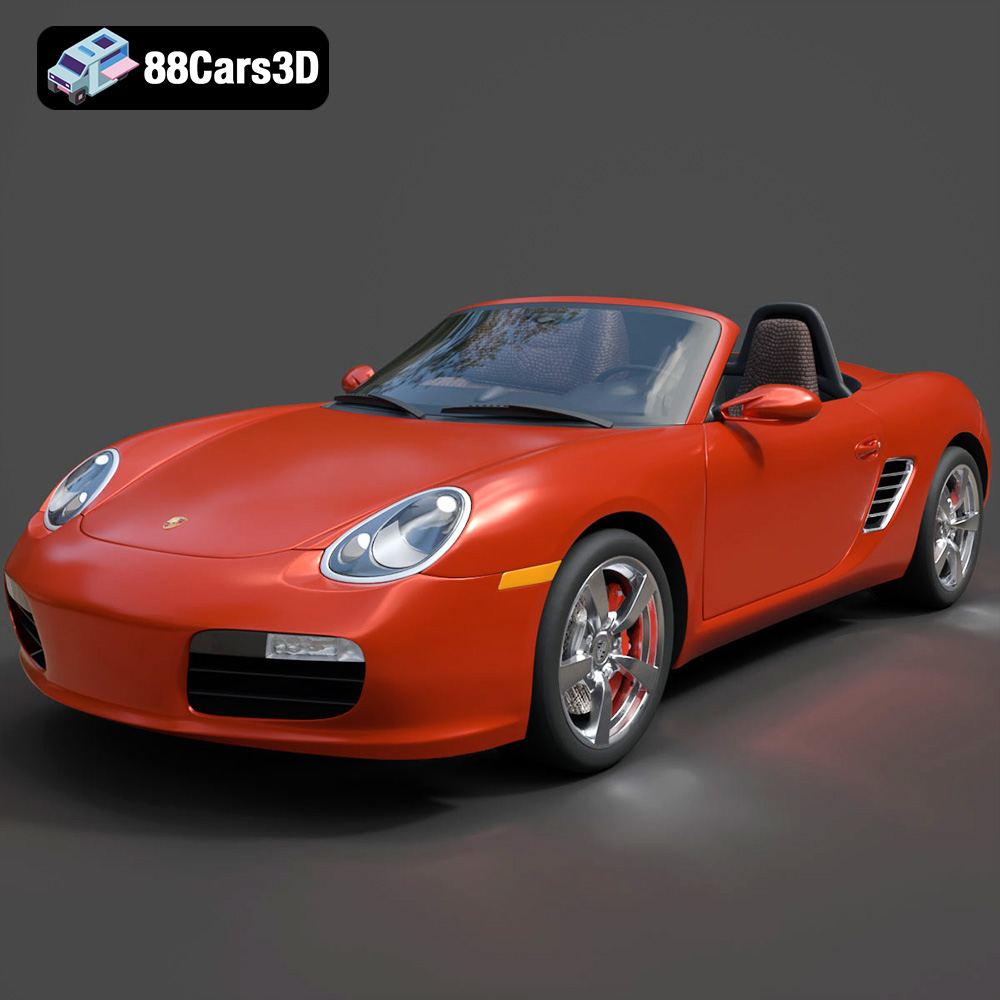
Porsche Boxster 2009 3D Model
Texture: Yes
Material: Yes
Download the Porsche Boxster 2009 3D Model featuring clean geometry, realistic detailing, and a fully modeled interior. Includes .blend, .fbx, .obj, .glb, .stl, .ply, .unreal, and .max formats for rendering, simulation, and game development.
Price: $10

Porsche Carrera GT 2004 3D Model
Texture: Yes
Material: Yes
Download the Porsche Carrera GT 2004 3D Model featuring clean geometry, realistic detailing, and a fully modeled interior. Includes .blend, .fbx, .obj, .glb, .stl, .ply, .unreal, and .max formats for rendering, simulation, and game development.
Price: $10

Porsche Cayman S-009 3D Model
Texture: Yes
Material: Yes
Download the Porsche Cayman S-009 3D Model featuring clean geometry, realistic detailing, and a fully modeled interior. Includes .blend, .fbx, .obj, .glb, .stl, .ply, .unreal, and .max formats for rendering, simulation, and game development.
Price: $10

Porsche Panamera 2023 3D Model
Texture: Yes
Material: Yes
Download the Porsche Panamera 2023 3D Model featuring clean geometry, realistic detailing, and a fully modeled interior. Includes .blend, .fbx, .obj, .glb, .stl, .ply, .unreal, and .max formats for rendering, simulation, and game development.
Price: $10
